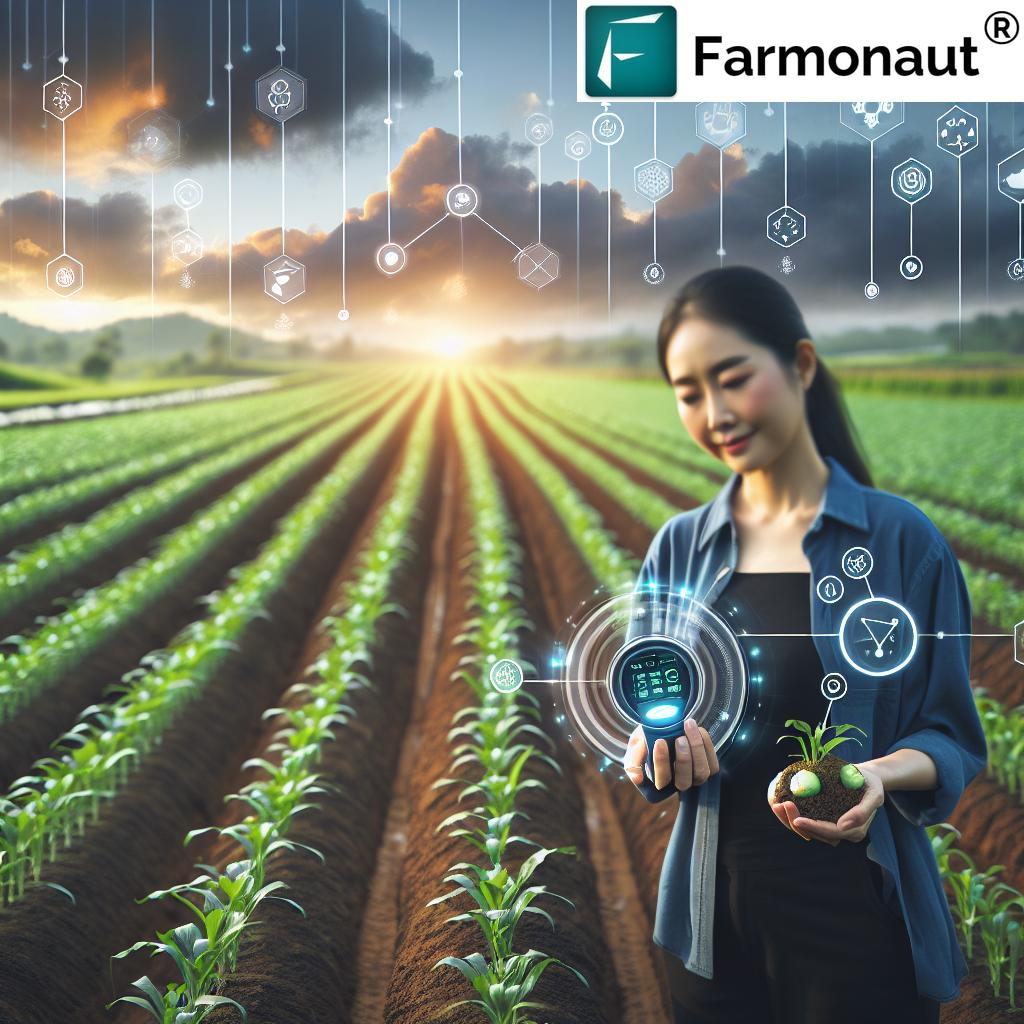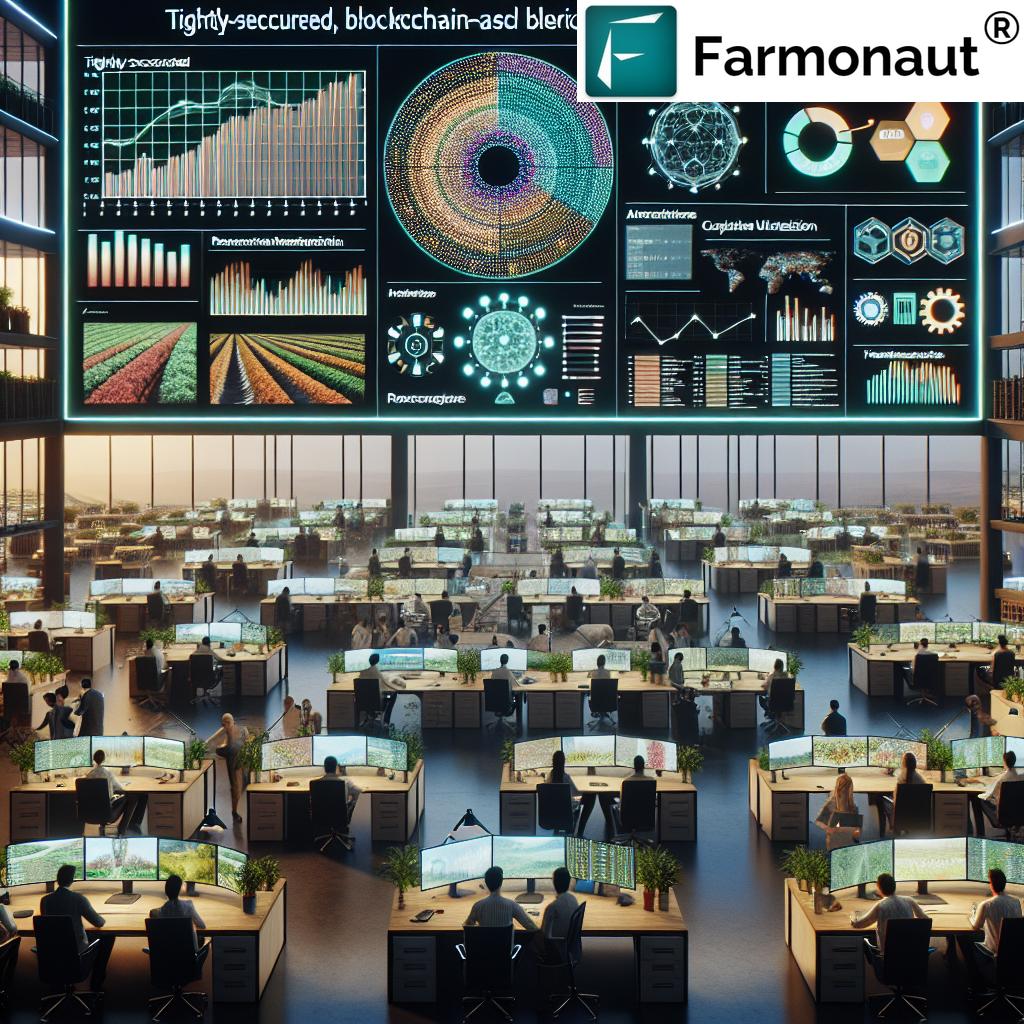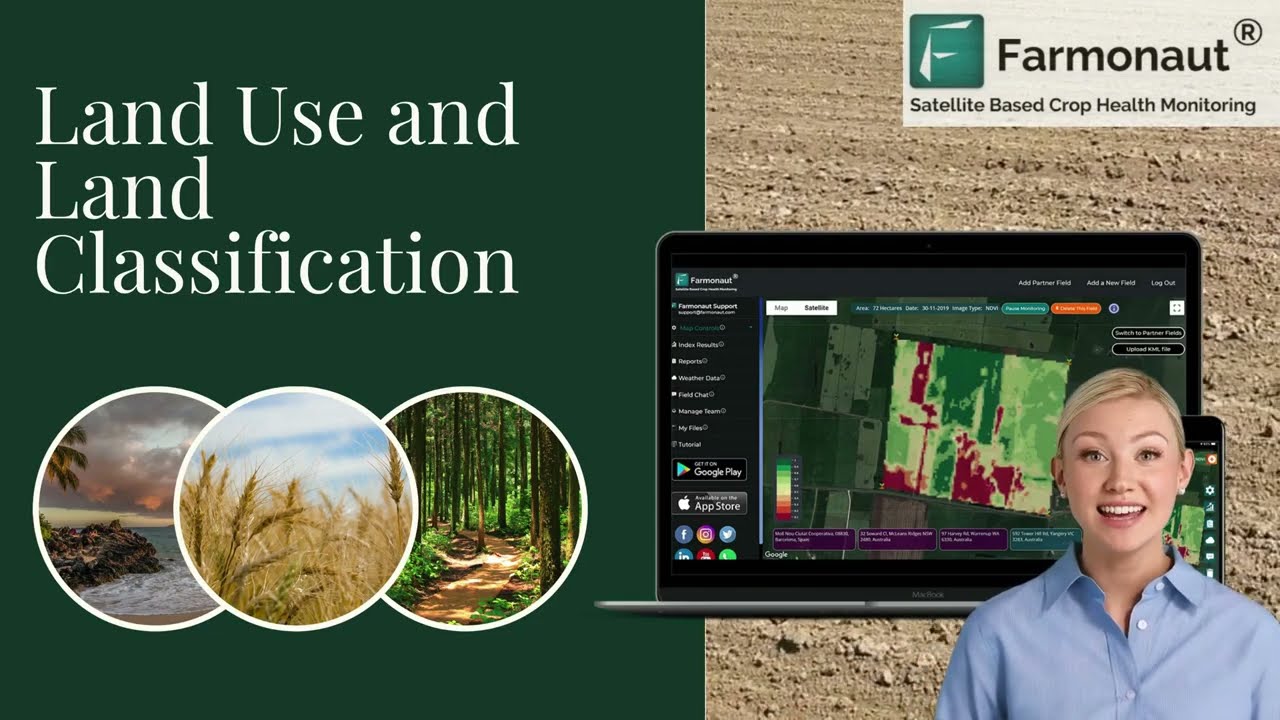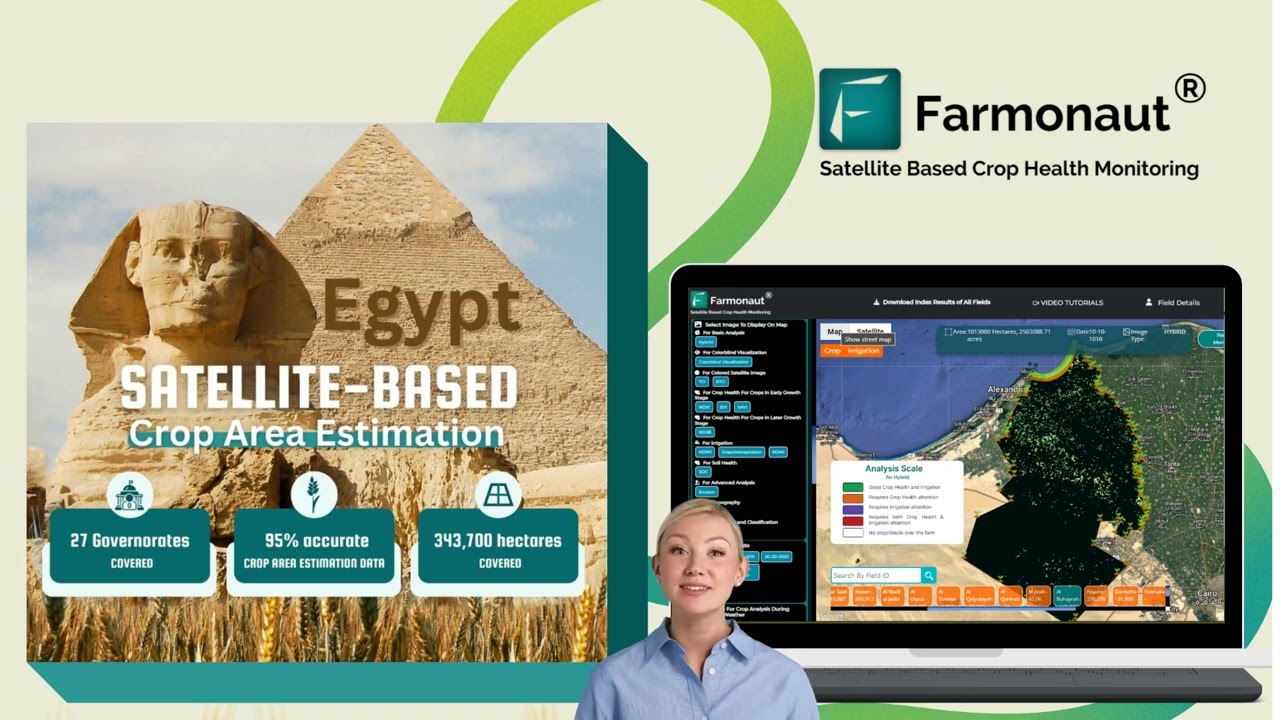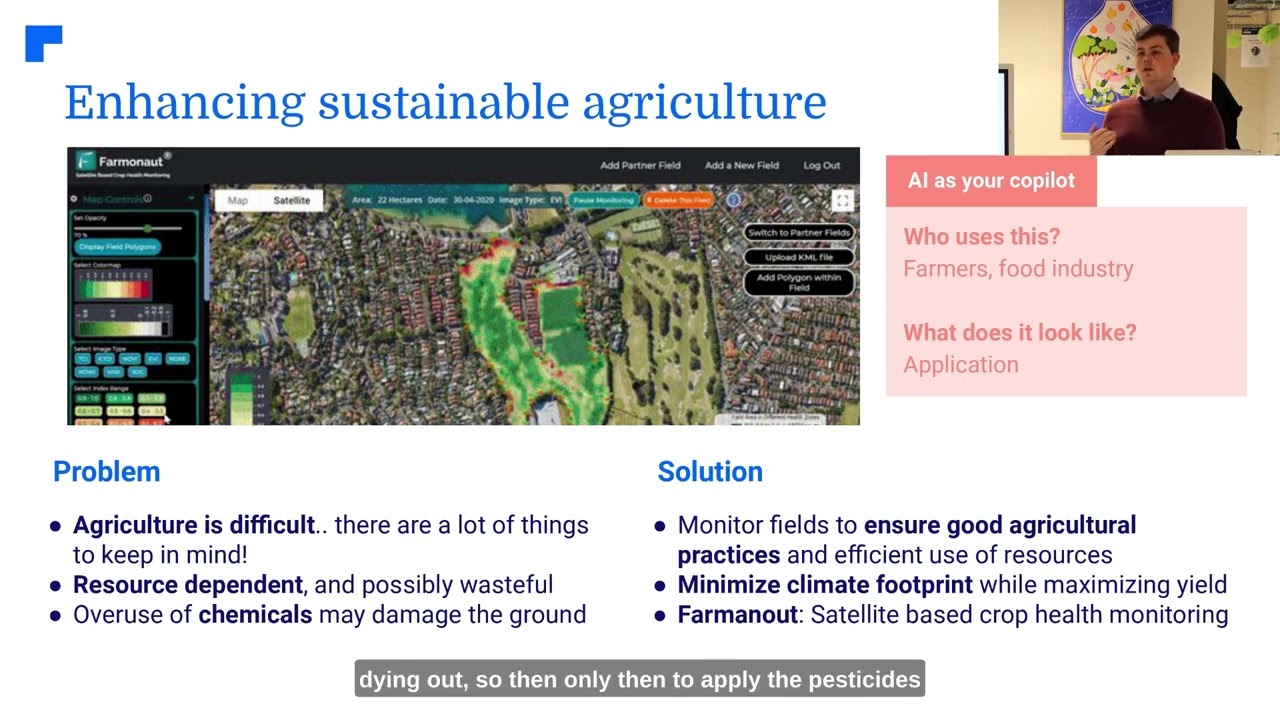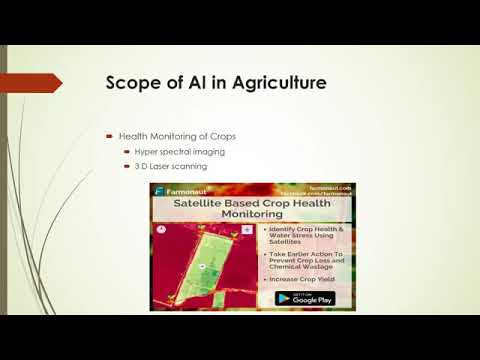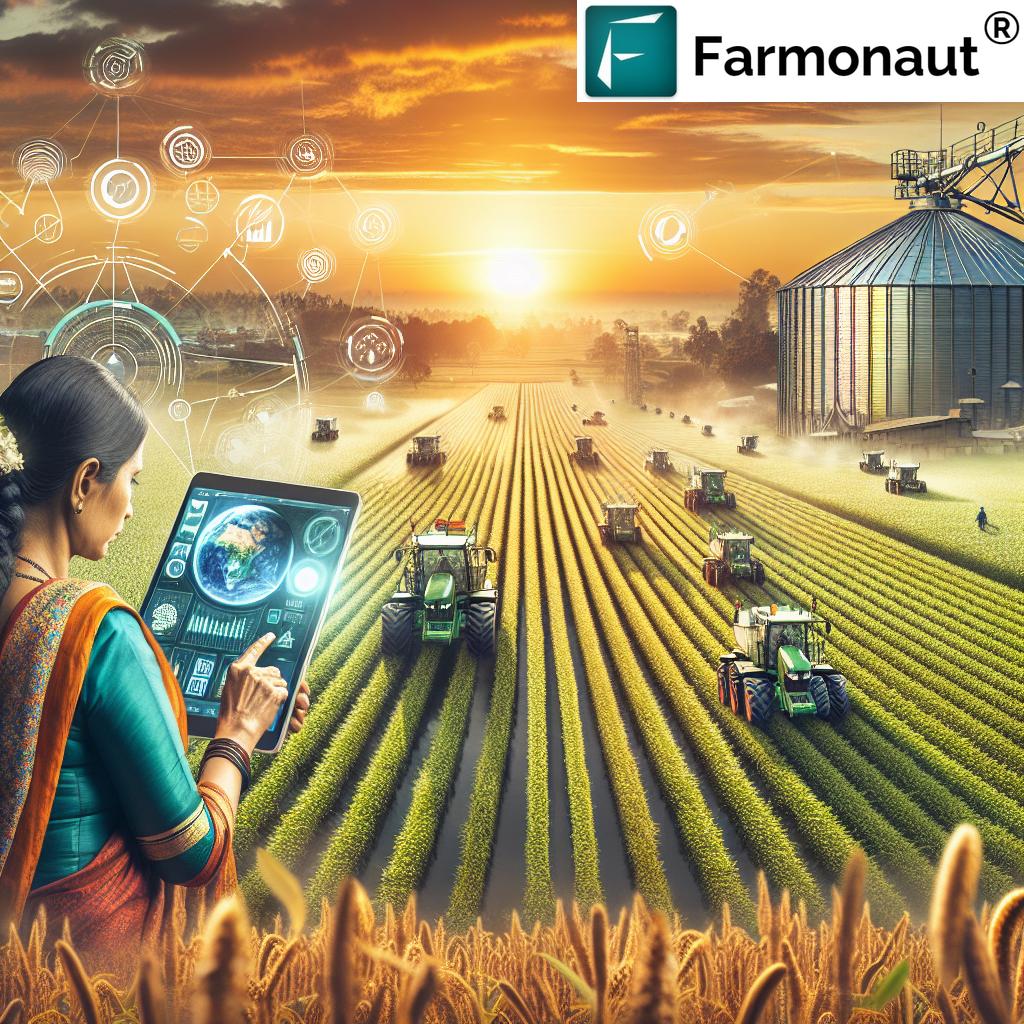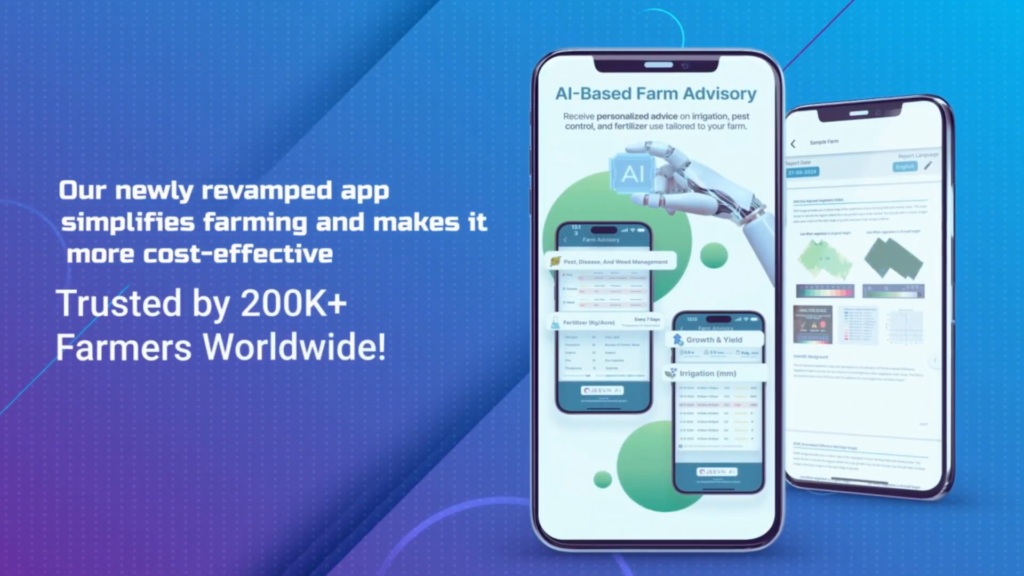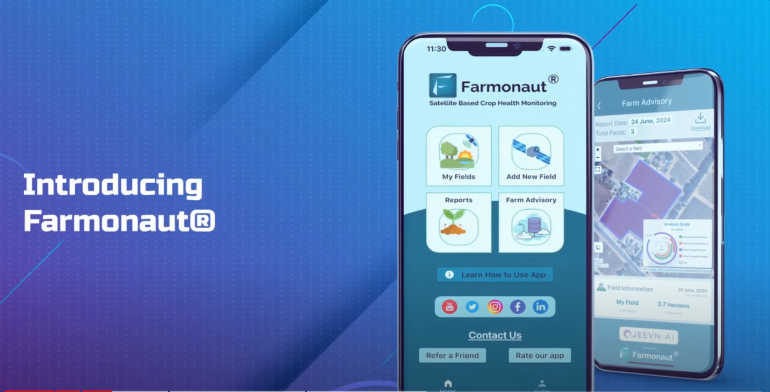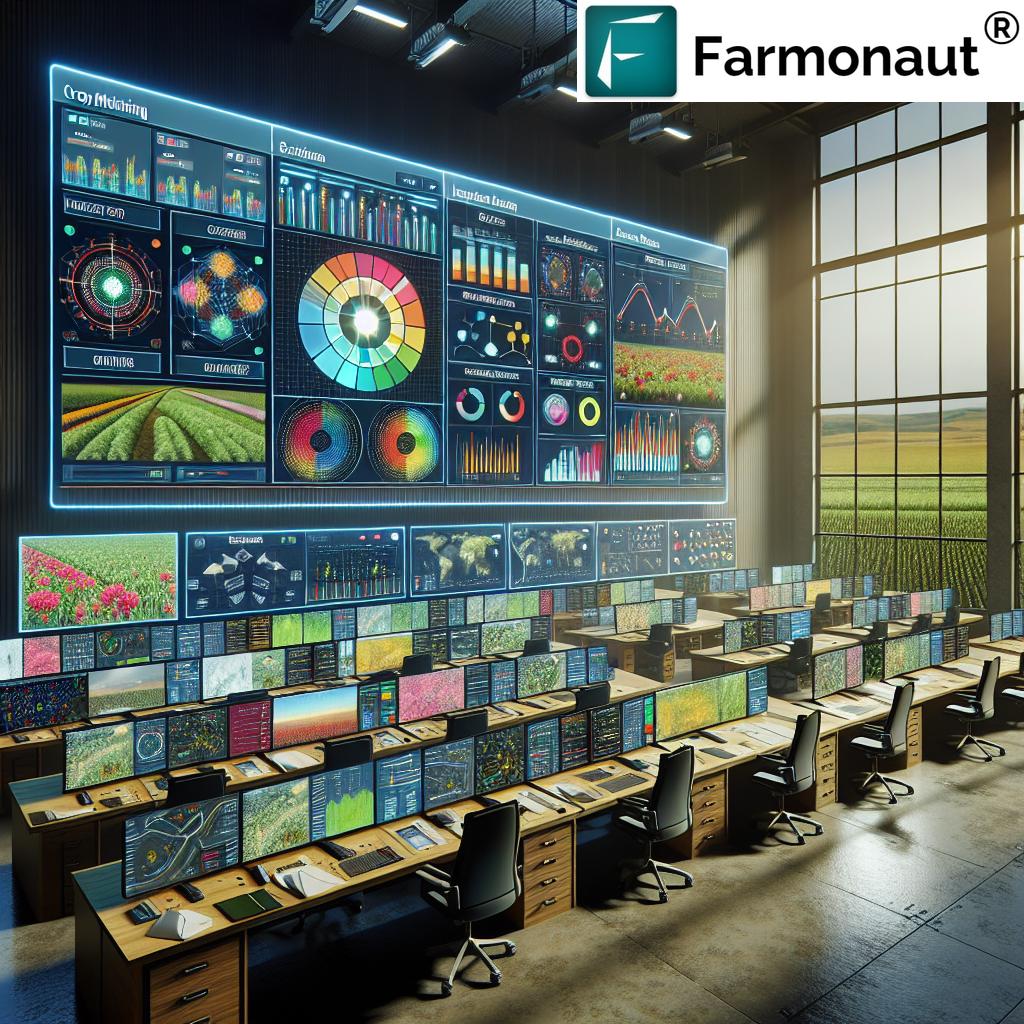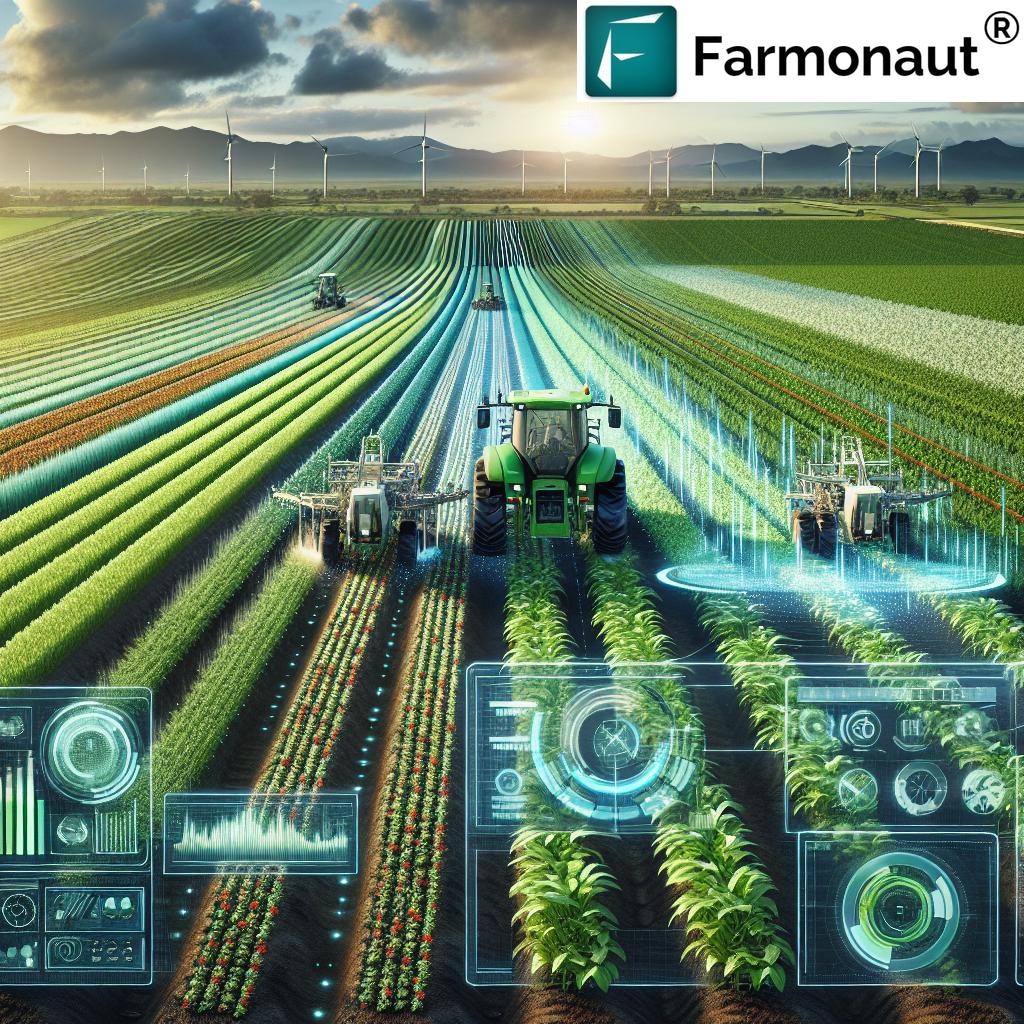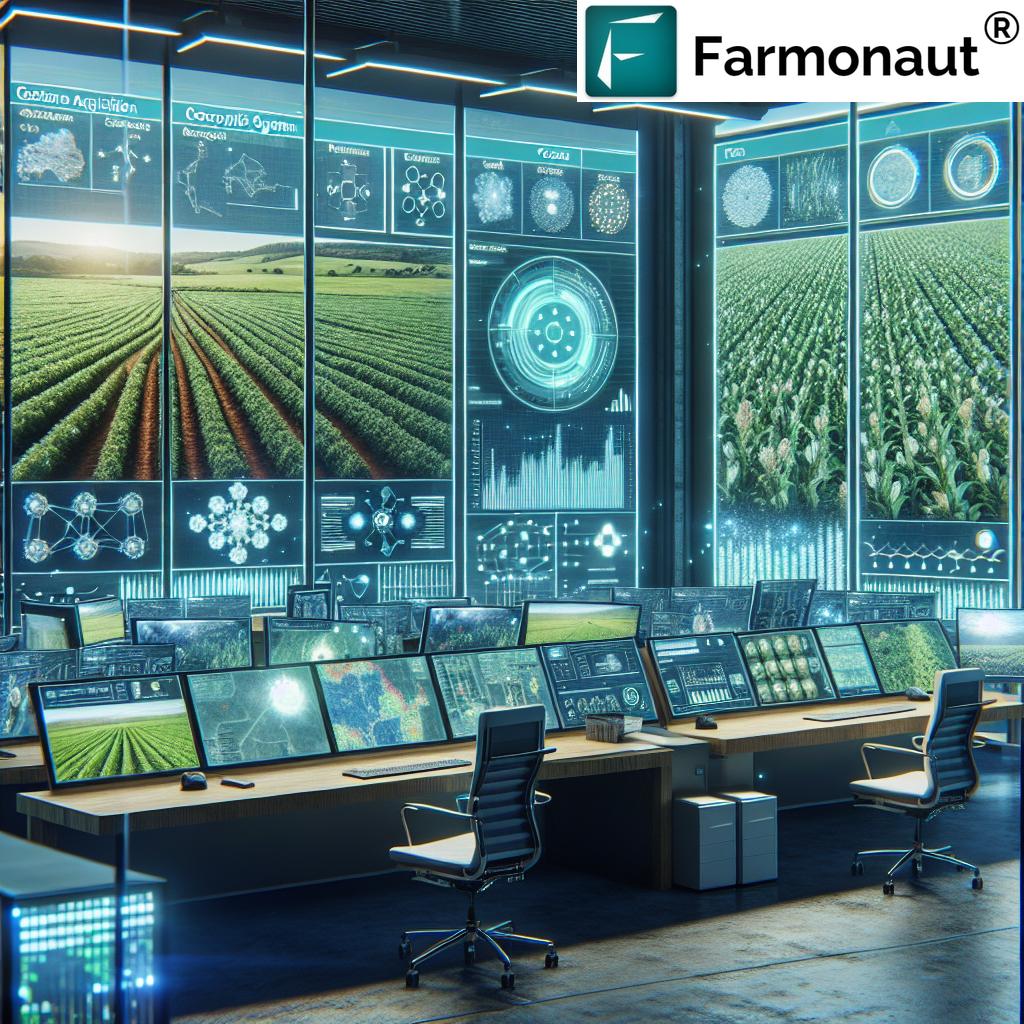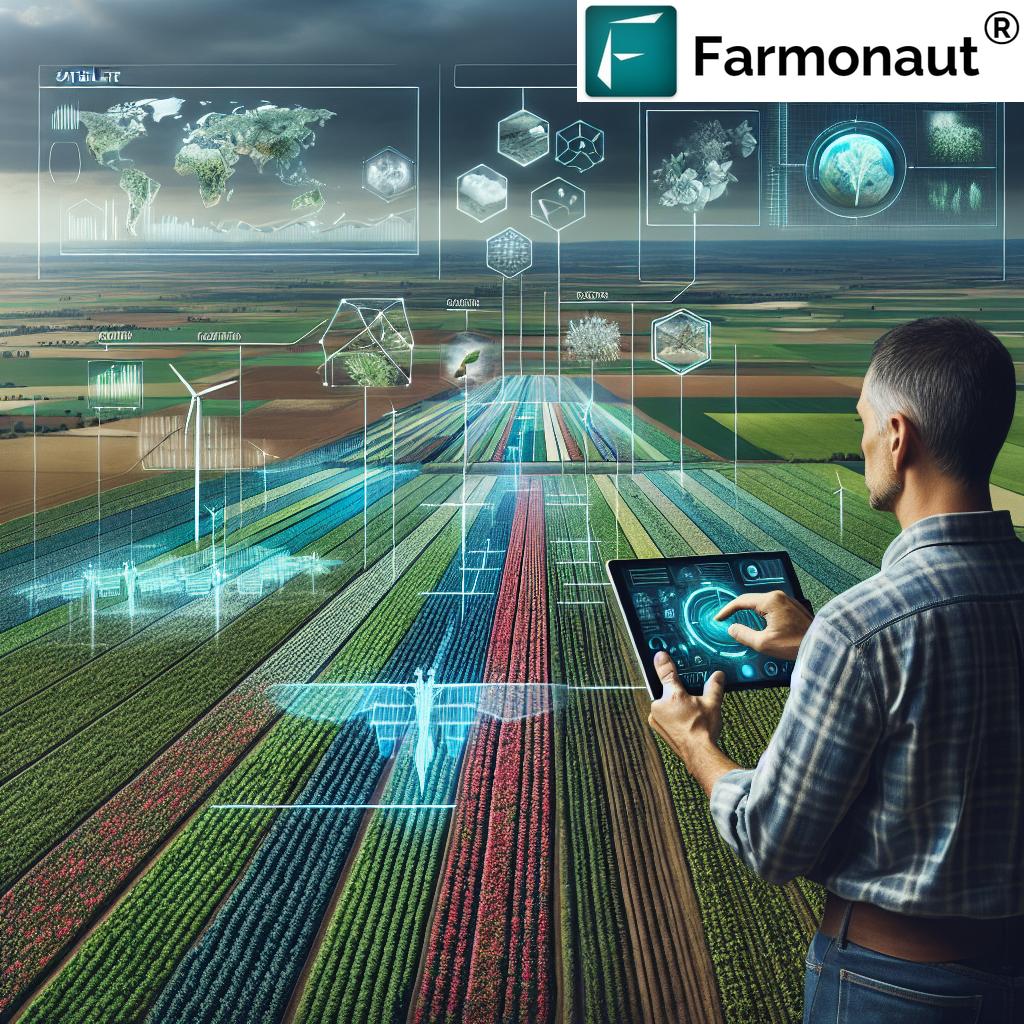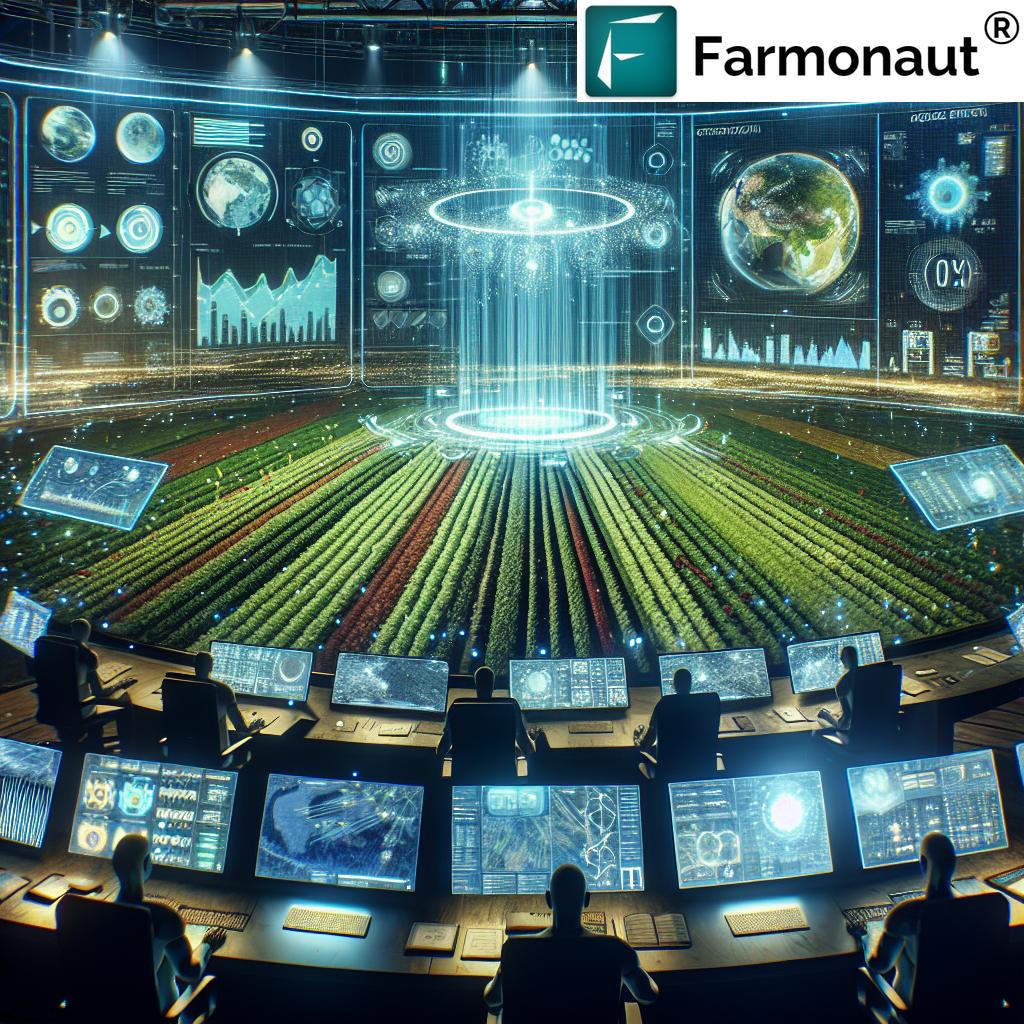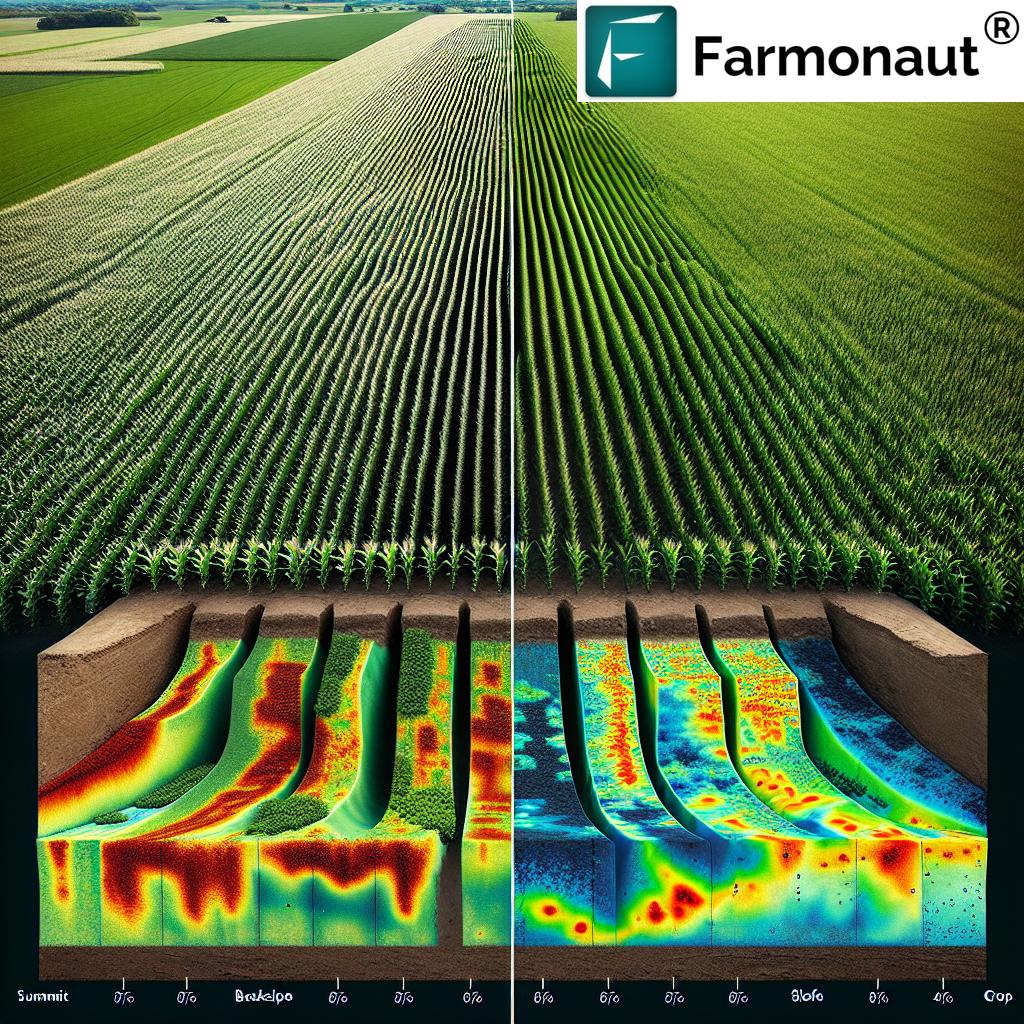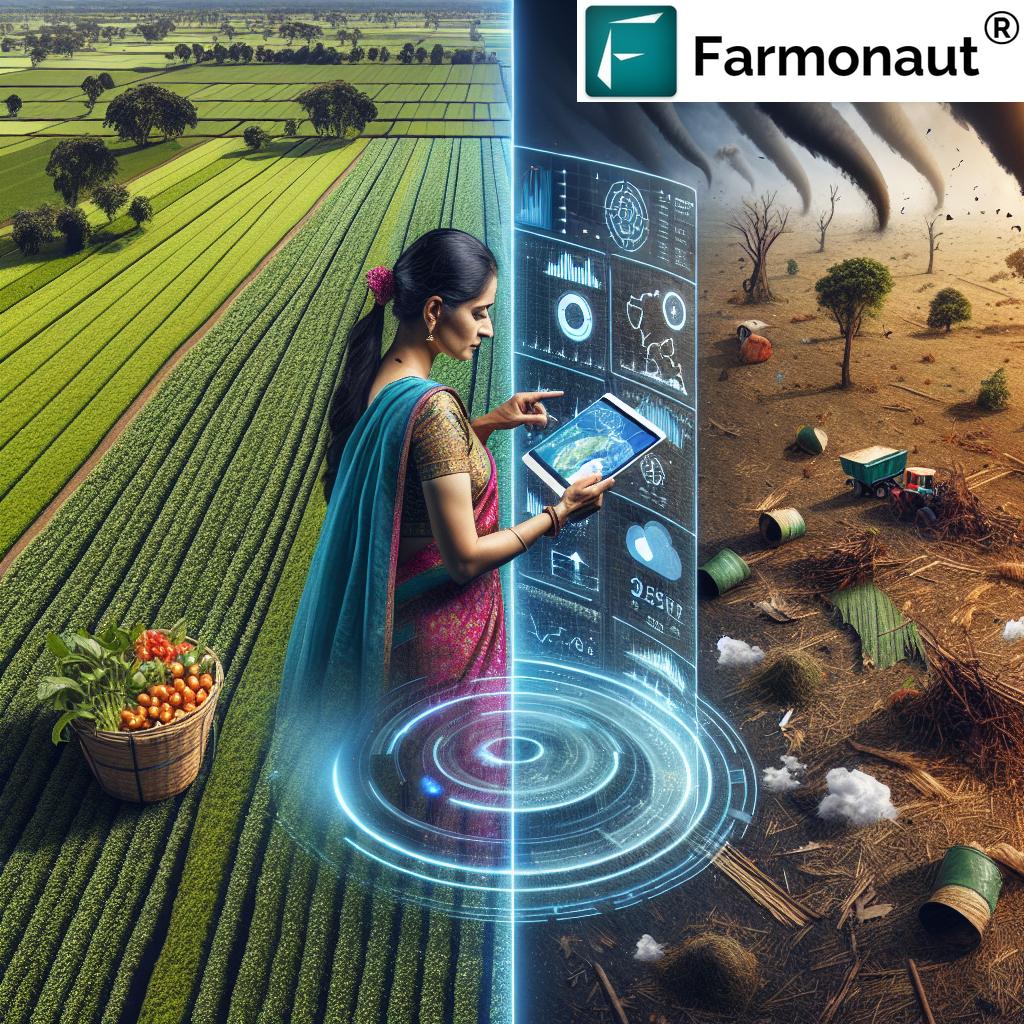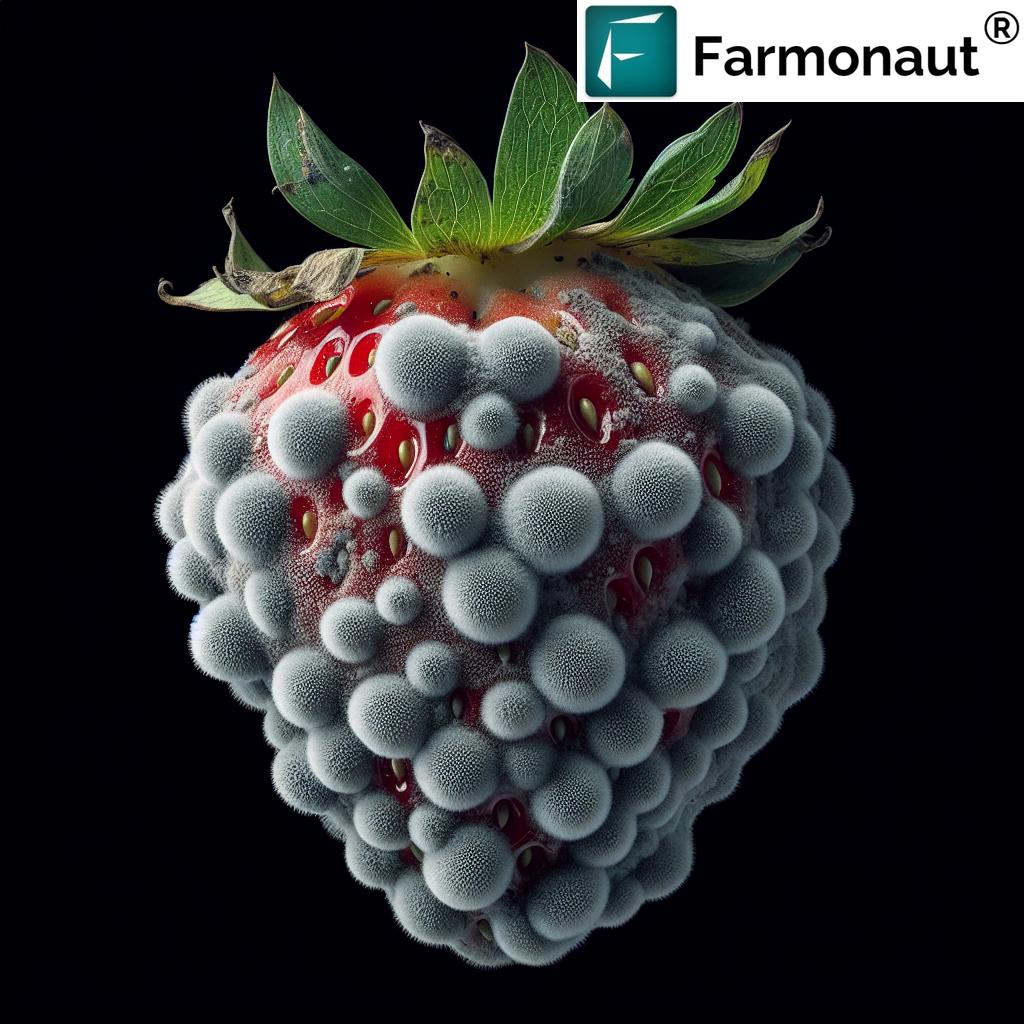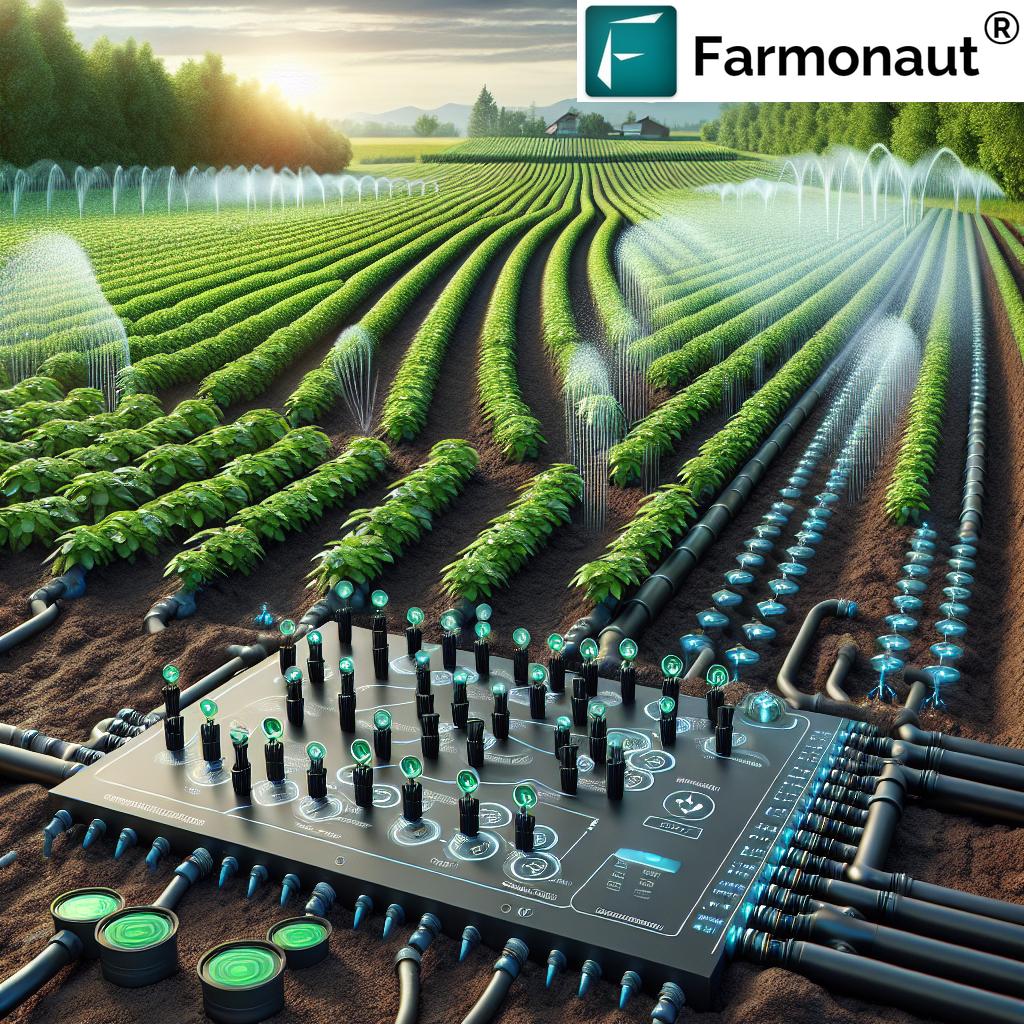Digitising Agriculture: 7 Shocking Innovations Revealed!
Table of Contents
- Introduction: The Era of Digital Agriculture
- Understanding Digital Agriculture
- 7 Shocking Digital Agriculture Innovations
- Comparison Table of Digital Agriculture Innovations
- Benefits of Digitising Agriculture
- Videos: See Digital Agriculture in Action
- Challenges in Implementing Digital Agriculture
- Global Perspectives on Digital Agriculture
- Farmonaut: Bridging the Technology Gap
- Farmonaut Subscription Plans
- Frequently Asked Questions
- Conclusion: Shaping the Future of Farming
“AI-powered precision farming can increase crop yields by up to 30% compared to traditional methods.”
Introduction: The Era of Digital Agriculture
The agricultural sector is experiencing a revolution—the digital revolution. As digital technologies like AI, IoT, satellite imagery, and blockchain become integral to farming, we find ourselves at the intersection of innovation and necessity. With the global population projected to reach nearly 10 billion by 2050, the pressure on farmers to boost productivity, reduce environmental impact, and ensure sustainable resource use has never been greater.
In this comprehensive guide, we’ll delve deep into how digitising agriculture and precision farming technologies are not only transforming traditional farming practices but also unveiling 7 shocking innovations that are redefining how we grow our food. Together, we’ll explore the data, the tools, and the strategies supporting a more efficient, transparent, and sustainable future for agriculture.
Understanding Digital Agriculture: From Fields to Future
Digital agriculture is more than just a buzzword—it’s a holistic approach that spans the entire agri-food value chain. While precision agriculture focuses on optimizing on-farm practices, true digital agriculture covers every stage, from field management and crop monitoring to supply chain transparency and consumer engagement.
- Collect: Gathering real-time agricultural data from sensors, satellites, and field equipment
- Store: Securely storing data using cloud platforms or on-premise solutions
- Analyze: Leveraging AI and data analytics to turn raw data into actionable insights
- Share: Disseminating information to all stakeholders in the agricultural sector
By digitizing these processes, we ensure that every activity—from planting to marketing—benefits from the best technological advancements available.
7 Shocking Digital Agriculture Innovations Transforming Farming
Let’s uncover the seven most groundbreaking innovations that are leading the evolution of modern agriculture.
1. Precision Farming Technologies
Precision farming technologies empower farmers to apply water, fertilizers, and pesticides only where needed and in the right doses. Using tools like GPS-guided tractors, sensors, and agricultural data analytics, farmers can optimize input application, maximize yields, and reduce waste.
- Optimizes crop health and resource use
- Reduces environmental impact by minimizing over-application of chemicals
- Enables site-specific management with variable rate technology (VRT)
For example, Farmonaut leverages satellite-based multispectral imaging to monitor soil moisture and vegetation health, helping farmers make informed decisions on irrigation and input application. This not only saves resources but also boosts overall agricultural productivity.
2. IoT in Farming: Real-Time Field Monitoring
The Internet of Things (IoT) has revolutionized agricultural management by embedding smart devices for real-time field monitoring. IoT in farming involves sensors that collect critical data on soil moisture, temperature, humidity, and even crop growth rates.
- Automates data collection (soil sensors, weather stations, etc.)
- Alerts farmers to changing field conditions requiring attention
- Improves prediction of crop water requirements, reducing over-irrigation
Connected devices provide a foundation for informed decisions regarding irrigation schedules, precise input application, and even predicting pest risks. This not only improves efficiency but also enables cost savings through timely interventions.
3. Artificial Intelligence & Machine Learning in Agriculture
Artificial intelligence in agriculture is changing how we approach farming altogether. Through machine learning models and AI-driven platforms, it’s possible to analyze large sets of field data and satellite images to:
- Identify early-stage diseases or pest infestations
- Forecast crop yields and risks based on real-time data
- Deliver personalized advisory services for better management
Farmonaut’s Jeevn AI Advisory System is a perfect example—offering real-time, personalized guidance to farmers based on satellite imagery and weather forecasts. The Farmonaut app brings these powerful analytics directly to the palm of your hand.
4. Blockchain in the Agriculture Supply Chain
Blockchain in agriculture supply chain ensures transparency and product authenticity from farm to table. Every step, from planting to delivery, is recorded in an immutable ledger, making it possible to:
- Track origin and crop quality
- Reduce fraud and improve traceability
- Build consumer trust in agricultural operations
With Farmonaut’s Blockchain Traceability solution, agricultural businesses can enhance traceability and consumer engagement. This integration is crucial for export-oriented sectors and for ensuring food safety worldwide.
5. Drones for Crop Monitoring & Robotics Automation
Drones for crop monitoring employ multispectral imaging and real-time surveillance to assess crop health and detect stress or nutrient deficiencies in vast fields. Robotics go a step further, automating labor-intensive tasks like precise planting, weeding, and even harvesting.
- Monitor plant vigor, detect anomalies, and guide actionable insights
- Automate high-volume, repetitive agricultural processes
- Reduce labor costs and increase task efficiency
By combining aerial imagery and automation, farmers can replace manual scouting with digital tools, saving time while improving quality and consistency in field operations.
“Digital agriculture tools have reduced water usage in some farms by nearly 50% through advanced data analytics.”
6. Smart Farming Solutions for Smallholder Farmers
Smart farming solutions are now democratizing access to advanced technologies for smallholder farmers—who account for a significant portion of the world’s food production. Through mobile apps, digital platforms, and affordable subscription models, these farmers can:
- Receive crop-specific guidance and weather alerts
- Access satellite-driven monitoring, regardless of farm size or location
- Benefit from resource management tools that optimize every input
Farmonaut’s platform breaks barriers by offering real-time, cost-effective satellite-based services through web, Android, and iOS apps, supporting sustainable farming practices everywhere.
Discover Farmonaut’s API and Developer Docs for integrating satellite data into your own agritech platforms or services.
7. Sustainable Farming Practices & Carbon Footprinting
As sustainability becomes a critical global goal, modern digital agriculture prioritizes both productivity and environmental stewardship. Tools and services now enable:
- Carbon Footprinting: Tracking and reducing on-farm greenhouse gas emissions for regulatory compliance and sustainability marketing.
- Efficient resource management: Ensuring optimal use of water and other critical resources.
- Supply chain solutions: Trace carbon across the digital agriculture supply chain via blockchain.
For agribusinesses seeking to minimize their footprints, Farmonaut’s Carbon Footprinting feature offers real-time emissions data and actionable recommendations for continuous improvement.
Comparison Table of 7 Digital Agriculture Innovations
| Innovation Name | Technology Used | Key Benefits | Estimated Yield Improvement (%) | Sustainability Impact |
|---|---|---|---|---|
| Precision Farming Technologies | GPS, Data Analytics, VRT, Sensors | Input optimization, reduced waste, increased crop yields | 10-28% | Significant reduction in fertilizer/pesticide usage |
| IoT in Farming | Sensors, Smart Devices, Cloud Platforms | Real-time monitoring, risk alerts, efficient irrigation | 5-18% | 50% decrease in water consumption possible |
| AI & Machine Learning | AI, Machine Learning Algorithms, Satellite Analytics | Disease prediction, yield forecasts, personalized advice | 20-30% | Lower input usage, improved land stewardship |
| Blockchain in Agri Supply Chain | Distributed Ledger, Smart Contracts | Traceability, fraud reduction, supply chain transparency | Indirect (up to 15%) | Improved accountability and sustainability verification |
| Drones & Robotics | Drones, Robotics, Imaging Tech | Efficient field monitoring, labor savings, timely interventions | Up to 20% | Reduced fuel, labor, and chemical use |
| Smart Farming for Smallholders | Mobile Apps, Digital Platforms, Satellite Tech | Accessible data, affordable precision farming, better planning | 10-25% | Wider adoption of efficient practices |
| Sustainability & Carbon Footprinting | Carbon Tracking/Analytics, Blockchain | Emissions reduction, marketing compliance, resource optimization | Variable | Direct positive environmental impact |
Benefits of Digitising Agriculture
By embracing digital agriculture, the agricultural sector unlocks a spectrum of benefits that are reshaping how we manage crops and resources:
- Increased Productivity: Intelligent data empowers farmers to optimize every stage—from planting and input application to harvesting timing—for higher, more consistent yields.
- Resource Efficiency: Precision application of water, fertilizers, and pesticides minimizes waste and conserves valuable resources.
- Informed Decision-Making: Real-time monitoring and predictive analytics mitigate climate, pest, and market risks, enabling timely, evidence-based actions.
- Supply Chain Transparency: Blockchain and IoT guarantee traceability, ensuring product quality and fostering trust between producers and consumers. Visit Farmonaut Product Traceability page for more.
- Economic Growth: Access to technology and financial services, especially for smallholder farmers, opens new markets, enhances resilience, and accelerates rural development.
- Sustainability: Farmonaut’s Carbon Footprinting provides real-time emissions tracking, promoting compliance and climate-smart agriculture.
- Reduced Environmental Impact: Lower input usage translates to less runoff, reduced greenhouse gas emissions, and healthier soils.
With Farmonaut, farmers can access all of these benefits without the need for expensive on-farm hardware—driving a genuine democratization of data-driven farming.
Videos: See Digital Agriculture in Action
How Farmonaut’s Satellite Technology is Revolutionizing Land Use in Agriculture
Discover Farmonaut’s Advanced Agri Solutions: Precision Crop Area Estimation
Farmonaut Covered By Radix AI: Leveraging Remote Sensing and Machine Learning for a Greener Future
The Role of Artificial Intelligence in Agriculture – Farmonaut | Agritecture | Joyce Hunter
Challenges in Implementing Digital Agriculture Solutions
Despite the evident benefits, the widespread adoption of digital agriculture does present hurdles, especially in regions with limited infrastructure or resources. Here’s what we must overcome:
- High Implementation Costs: Upfront investment in technology, including devices and software, can be daunting—especially for small-scale or remote farmers. Farmonaut’s Large-Scale Farm Management Platform offers scalable, affordable solutions.
- Digital Literacy & Training: Many farmers require education and ongoing support to efficiently utilize digital tools and platforms. Farmonaut’s Advisory Solutions help bridge this gap.
- Data Privacy Concerns: As more information is gathered and shared, privacy becomes a pressing issue. Strict data stewardship protocols are essential in building farmer trust.
- Infrastructure Limitations: Reliable internet connectivity and electricity are not universally available, hampering remote area integration of smart systems.
- Interoperability: Lack of standardized data formats or integration between different digital agriculture platforms can result in inefficiencies.
Broad collaboration, government policy updates, and business investment—like Farmonaut’s flexible platform—are key drivers toward overcoming these barriers.
Global Perspectives: Digital Agriculture Worldwide
The pace and nature of digitizing agriculture varies dramatically across continents, reflecting local priorities, resources, and government initiatives:
- Europe: Platforms such as Smart Agri Hubs (see projects) focus on integrating digital solutions to existing machinery and supply chains, promoting efficiency and competitiveness within the sector.
- Africa: Rapid mobile adoption and the development of agritech services are empowering millions of smallholder farmers and are crucial for food security and climate resilience.
-
Asia: In Japan and beyond, robotics, drones, and AI are mitigating labor shortages and boosting yields.
Farmonaut Fleet Management can help optimize agricultural logistics across large, geographically dispersed farms in these regions.
- South America: Roughly 50% of farmers have now adopted agri-tech, with remote sensing and digital field mapping tools leading the digital transformation.
Farmonaut: Bridging the Technology Gap in Precision Agriculture
As the world strives to digitize agriculture, one company stands out for its inclusive, affordable, and scalable approach: Farmonaut.
- Satellite-Based Crop Health Monitoring: Access detailed crop health analysis, soil moisture levels, and NDVI to maximize yields and minimize resource waste.
- Jeevn AI Advisory System: Personalized, AI-powered farm insights and decision support for smarter, more sustainable crop management.
- Blockchain Traceability Solutions: End-to-end transparency with secure, immutable supply chain records—critical for high-value, export-oriented agriculture.
- Fleet & Resource Management: Optimize machinery use, reduce costs, and improve safety across large agricultural operations.
- Carbon Footprinting: Meet climate goals with real-time emissions monitoring and sustainability analytics.
- Flexible Business Model: Crop loan and insurance verification ensures access to credit, supports insurance claims, and enables reliable financial services for farmers and institutions.
Unlike traditional systems that rely on expensive in-field hardware, Farmonaut uses satellite data and cloud platforms, drastically lowering cost barriers for agricultural digital transformation. This modular approach serves everyone—from smallholders to government bodies and multinational agribusinesses—with custom, scalable solutions.
Farmonaut Subscription Plans and Flexible Access
Farmonaut operates with a subscription-based model—so whether you manage a single small farm in Africa or a network of plantations in Europe or Asia, you can choose a plan matching your scale and needs.
For larger deployments, integration with your existing farm management platforms (API) or third-party digital solutions is effortless through Farmonaut’s comprehensive developer documentation.
Frequently Asked Questions: Digital Agriculture, Precision Farming & Farmonaut
What is digital agriculture?
Digital agriculture involves integrating electronic tools—such as sensors, satellites, AI, and digital platforms—across the entire farming value chain to collect, store, analyze, and share agricultural data. It goes beyond precision agriculture, including everything from field management to consumer engagement and supply chain transparency.
How can smallholder farmers leverage precision farming technologies affordably?
Tools like Farmonaut’s mobile and web Apps provide real-time satellite-based monitoring and AI-driven advisories without requiring expensive in-field sensors or hardware. Subscription pricing and flexible modular services make digital agriculture accessible for every farm size.
What is the main sustainability benefit of digital agriculture?
Sustainability is achieved by reducing unnecessary input usage (water, fertilizers, pesticides), minimizing environmental impact, and enabling carbon footprint tracking. Advanced analytics also support resilient, climate-smart farming—benefiting both producers and the planet.
How does blockchain enhance the agricultural supply chain?
Blockchain in agriculture supply chain ensures traceability, authenticity, and transparency for every crop or product. By recording every stage from farm to consumer, it reduces fraud, verifies quality, and increases consumer confidence—particularly important for export and high-value supply chains.
What makes Farmonaut different from other digital agriculture providers?
Farmonaut bridges affordability and advanced technology by using satellite imagery, AI, and blockchain rather than expensive hardware. Its modular, scalable approach helps both individual smallholders and large agribusinesses safely adopt data-driven operations, improve yields, track sustainability, and access financial services—all on a single platform.
How can I get started with digital agriculture?
Simply select the appropriate Farmonaut app for your device (Web, Android, iOS), review the subscription options above, or explore the API integration for broader solutions.
Conclusion: Digitising Agriculture for a Sustainable, Efficient Future
The digital agriculture revolution is not a far-off dream—it’s rapidly unfolding in fields worldwide. The integration of precision farming technologies, IoT in farming, AI-driven analytics, blockchain in the agriculture supply chain, and accessible digital tools for smallholder farmers are transforming every aspect of agricultural operations.
By embracing these innovations, we can collectively ensure a future of higher yields, reduced waste, efficient resource use, and a positive environmental impact—regardless of whether we farm in Africa, Europe, Asia, or the Americas. With companies like Farmonaut paving the way through cost-effective, scalable, and advanced digital solutions, the entire agricultural sector is better equipped than ever to meet the challenges of tomorrow.
Start your journey toward smarter, more sustainable farming—digitize your agriculture today!


